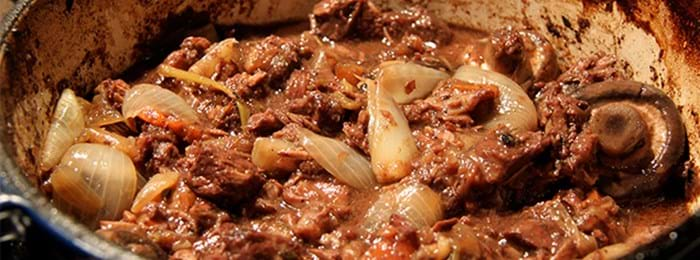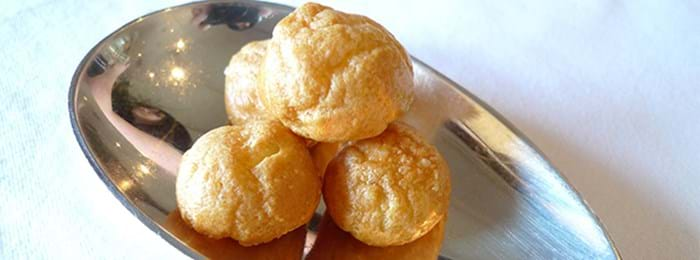A French affair with food
When you think of typical French cuisine, you might think about snails, rich cheeses and full-bodied red wines. All of these things, and more, can be found in the region of Burgundy, in central-eastern France. From the finest wines to some of France’s best beef, explore our guide below and introduce yourself to some of Burgundy’s finest culinary delights.
Dijon mustard
In the early Middle Ages, the city of Dijon in Burgundy was the centre of the mustard-making world. Using vinegar in the mustard instead of a juice made from unripe grapes, Jean Naigeon is celebrated for putting Dijon mustard on the map, and today authentic Dijon mustard is AOC (appellation d'origine contrôlée) recognised.
Many traditional Burgundy dishes are prepared with Dijon mustard, and you’ll often find the word “Dijonnaise” on menus, which marks the use of mustard and, often, mayonnaise. Superb with meat, you can enjoy it with roast beef, ham and sausages, as well as a great thickening agent in sauces.
Jambon persillé
Meaning “parslied ham” in French, jambon persillé is a favourite with local Burgundy restaurant menus for being a simple, yet deliciously rich, traditional dish. A somewhat old-fashioned terrine, the stock to set the dish is usually made using a calf’s foot and/or veal bones.
Using ham hocks, white wine, leeks, celery, carrots, onions and plenty of parsley, the terrine is often enjoyed with a gribiche sauce, which resembles mayonnaise and is made using egg yolks and mustard.
Boeuf bourguignon

Hearty boeuf bourguignon. © Flickr user Matt Ryall
A wonderfully rich dish featuring beef, mushrooms, bacon, a red wine sauce and shallots, boeuf bourguignon is one of Burgundy’s most popular dishes. Like much Burgundy cuisine, this dish shows the importance of using wine in cooking – and not just any wine, but good wine that you’d be happy to drink. Similarly, using a good cut of beef ensures that this stew has a full, rich flavour, and it’s best enjoyed with potatoes or plenty of crusty French bread.
Beef is prevalent throughout the cookbooks of Burgundy, due to the region’s famous Charolais cattle, a quality breed of white cow that you’ll find dotted throughout the landscape.
Coq au vin
Enjoy tender chicken in coq au vin. © Flickr user Will Clayton
Using Burgundy red wine, coq au vin is a traditional dish featuring chicken, wine, lardons, garlic and mushrooms. Found throughout France, the chicken is braised with the other ingredients, but it’s the red wine from this region that gives the chicken its rich flavour.
Slowly cooked over a long period, this is a dish that’s perfect for the autumn and winter seasons, and along with boeuf bourguignon, is a great example of the heavy use of wild mushrooms in Burgundy cuisine.
Gougère

Enjoy lovely light gougères as an appetiser. © Flickr user Arnold Gatilao
Today you can find gougères in many different forms across France, but it’s said that the original came from Burgundy. A type of choux pastry stuffed with mixed cheese, you can also find them filled with other traditional ingredients such as mushrooms, ham and beef. Often served chilled during wine tastings, gougères can also be enjoyed as a delightful appetiser.
Wine
Perhaps above all else, Burgundy is famous for its production of wine. Known as “Bourgogne” or “vin de Bourgogne”, the wine here is varied due to the often wet and windy weather, which courses through the valleys of the Saône-et-Loire and gives the region a unique terroir (the grape, soil, climate and placement of the vineyard that goes into creating the wine). The vineyards are ranked throughout the region, with the Bourgogne title given to any wine grown in the region, while wines with just the village name are considered to be more premium.
There are two grape varieties to look out for when exploring Burgundy, Pinot Noir and Chardonnay. Both with complex flavours and an interesting aroma, see if you can try each one when exploring the five main growing regions of Chablis, Côte de Beaune, Mâconnais, Côte de Nuits and Côte Chalonnaise.
Hungry for travel? With Eurotunnel Le Shuttle you can get from Folkestone to Calais in just 35 minutes, and from there you’re free to explore the fantastic region of Burgundy.